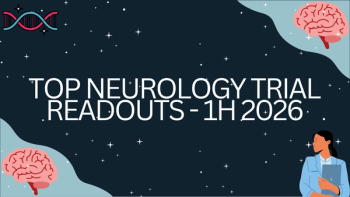
Diagnostic Pathway for Alzheimer’s Disease
Dr. Atri discusses his approach to diagnosis and Dr. McDade updates on the use of tau-PET for diagnosis of Alzheimer’s disease.
Episodes in this series

Marwan Sabbagh, MD: We’re going to go on to what imaging tests are used for Alzheimer disease for a diagnosis to assess clinical progression. I’m talking about imaging, Dr Atri. What would you use, and what are the challenges you see with PET [positron emission tomography], CT, and MRI?
Alireza Atri, MD, PhD: My clinical approach is that first you need to have an index of suspicion for somebody who may have a concern. Maybe the patient has a concern; maybe the family member has a concern; maybe you have a concern because you’ve seen some changes in cognitive or even medical function. Maybe someone’s medical condition has changed when they’ve been stable for a long time. We shouldn’t always assume their heart disease is worse, or they have out-of-control diabetes or hypertension. It could be that people aren’t functioning well cognitively. If there’s a concern that has to be worked up, there’s a pathway for doing that, taking a history from the patient and the family member, etc.
As you go down that pathway and review history and risk, ultimately you have to do some validated instrument and make a decision. “Can I say that this person is cognitively unimpaired or that there’s no issue here? Do I go to the next step?” If you go to the next step, then we have to look at things that may be contributing or potentially causing this. We often do some blood work to look at conditions that are very common. Let’s not forget that as a biomarker. Then we do imaging. For the imaging part, I advocate that people can have an MRI to have an MRI because you can see the amount of white matter damage that could be contributing. You can look at strokes and things like that. Every year, we’re all surprised when somebody we don’t expect to have a tumor or something else has 1 sitting there in the temporal or frontal lobe. That’s important.
The other part to look at is atrophy patterns. If you have atrophy, that’s not something that’s going to happen overnight, and you can rule that in as part of that. The flip side isn’t that you should get a readout that says this is age-appropriate atrophy, white matter changes, and there’s no hippocampal atrophy, which therefore excludes Alzheimer disease. That’s not true. We know that. The positive predictive value is high, and I always encourage my colleagues to look at the MRI themselves. At least look at the FLAIR [fluid-attenuated inversion recovery], because the white on the FLAIR is bad, and you can get a sense for that. That’s a standard for structural.
After that, for imaging, you go down a path of asking: is there an issue? At what level? Is it subjective cognitive decline? Is it MCI [mild cognitive impairment] level? Is it mild dementia, or is it getting to the point where these changes in cognition are affecting independence? What’s the pattern of the syndrome? Is it amnestic multidomain? Is it language involvement? All those give us a probability of what else may be going on, always understanding that common diseases like sleep apnea and other things could be contributing.
If we need much higher confidence for the diagnosis, then we can go to the biomarkers. That’s something we were going to need because it’s a prerequisite for appropriate use of drugs that target amyloid. That’s a pathway that’s probably not necessarily for the diagnostic part, but for the risk part, you may need to do ApOE e4 testing. We’ll hear about ARIA [amyloid-related imaging abnormality] risk, for example, which we need to discuss with patients and families but also to make sure individuals have amyloid if you’re going to give them an amyloid drug. You may have options, like CSF [cerebrospinal fluid] or PET scans. Those are the main things we use, but in the future we’ll be able to use—depending on cost and accessibility—a multiplex to rule a diagnosis in, give prognostication, be able to present the risks and benefits to patients in a way they can make an informed choice, and monitor for safety.
Marwan Sabbagh, MD: This question is for all of you. Did you see any data on the imaging updates or from CTAD [Clinical Trials on Alzheimer’s Disease conference] that caught your eye or interest?
Eric McDade, DO: I’ll start there, Dr Sabbagh. At this conference, there wasn’t anything groundbreaking. There has clearly been an evolution, particularly with the use of tau PET, as we continue to learn about tau PET and we understand its role in diagnosis as well as prognosis that it plays, and as a marker of these responses to therapies. That’s the other component of the tau PET, that it’s increasingly become important in the clinical trial space where we’re using amyloid therapies. It will be probably used for some of these other therapies that we’ll talk about as well that attack different aspects of the disease, but it will use that as a way of measuring a probable magnitude of an effect from an amyloid therapy. Not only can you lower amyloid, but that can have an effect on the tau pathology, this neurofibrillary tangle pathology. At this point in Alzheimer disease, tau PET is the best measure we have of measuring these tangles. There’s evolution happening in the CSF-soluble space that may catch up quickly. But for quantifying the degree of neurofibrillary tangle pathology, the tau PET has become increasingly important.
Transcript edited for clarity
Newsletter
Keep your finger on the pulse of neurology—subscribe to NeurologyLive for expert interviews, new data, and breakthrough treatment updates.














































